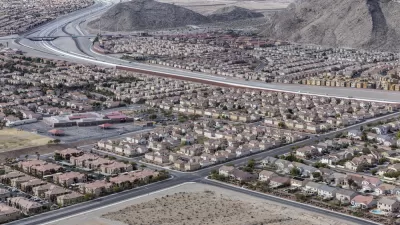A recent book examines the causes and effects of the 'persistent and long standing problem of concentrated poverty in the inner city' and offers recommendations for breaking the cycle. Do we have the commitment to fix the problem?
Joe Kriesberg examines Stuck in Place: Urban Neighborhoods and the End of Progress toward Racial Equality, by Patrick Sharkey, which reveals how "the negative impacts of concentrated poverty deepen as successive generations of the same family live in poor neighborhoods, especially for African American families." Among other key findings, Sharkey's analysis shows that disadvantage can be inherited, African Americans suffer significantly higher rates of downward mobility, and neighborhood improvements can dramatically raise "the economic fortunes of black youth." Another compelling finding:
The “most common pattern of neighborhood ‘improvement’ for African Americans in the 1980s entailed improvement in the economic status of residents combined with ethnic diversification in the form of a rise in Latino and foreign born newcomers.” This is very different than the “common conception of gentrification which often connotes a racial turnover where new white entrants …displace original minority residents,” writes Sharkey.
To tackle the cycle of disadvantage and its impacts, he recommends programs targeted at the neighborhood, regional, and national levels simultaneously.
"Sharkey recognizes the need for many different strategies, emphasizes the long term nature of this work, and cautions against policies that look for a quick fix," adds Kriesberg. "With all of this, Sharkey remains hopeful as there is significant evidence that we can make progress if we as a society are prepared to make a deep and durable commitment to doing so."
FULL STORY: Are Poor Families Stuck in Place?

Planetizen Federal Action Tracker
A weekly monitor of how Trump’s orders and actions are impacting planners and planning in America.

Chicago’s Ghost Rails
Just beneath the surface of the modern city lie the remnants of its expansive early 20th-century streetcar system.

San Antonio and Austin are Fusing Into one Massive Megaregion
The region spanning the two central Texas cities is growing fast, posing challenges for local infrastructure and water supplies.

Since Zion's Shuttles Went Electric “The Smog is Gone”
Visitors to Zion National Park can enjoy the canyon via the nation’s first fully electric park shuttle system.

Trump Distributing DOT Safety Funds at 1/10 Rate of Biden
Funds for Safe Streets and other transportation safety and equity programs are being held up by administrative reviews and conflicts with the Trump administration’s priorities.

German Cities Subsidize Taxis for Women Amid Wave of Violence
Free or low-cost taxi rides can help women navigate cities more safely, but critics say the programs don't address the root causes of violence against women.
Urban Design for Planners 1: Software Tools
This six-course series explores essential urban design concepts using open source software and equips planners with the tools they need to participate fully in the urban design process.
Planning for Universal Design
Learn the tools for implementing Universal Design in planning regulations.
planning NEXT
Appalachian Highlands Housing Partners
Mpact (founded as Rail~Volution)
City of Camden Redevelopment Agency
City of Astoria
City of Portland
City of Laramie





























